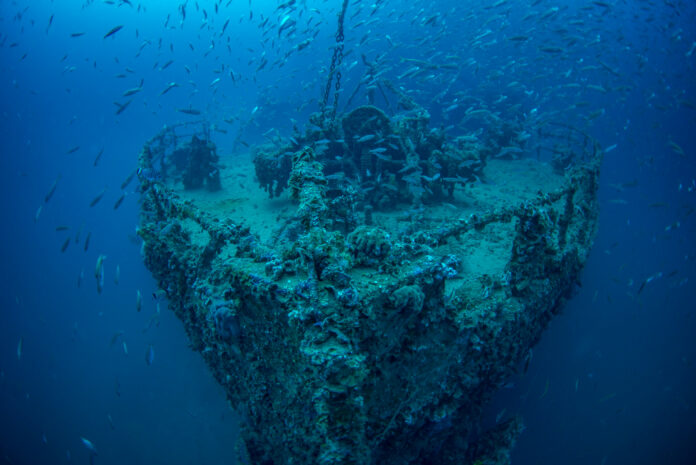Shipwrecks are a surprising haven for marine life in areas where there is heavy fishing, scientists have discovered.
To reach these findings, a group of British scientists studied five shipwrecks off the Berwickshire coast in England that are believed to have sunk in the 18th and 19th centuries. Three of these shipwrecks were in areas open to fishing trawlers, while two were in protected areas. Their findings were published in the journal Marine Ecology.
Rick-Ayrton/Getty
The scientists discovered that the abundance of marine life, including fish and corals, was 240 percent greater in wreck sites where fishing trawlers were frequent. They also found that the seabed within a 50-meter radius of the wrecks had a density of marine life 340 percent greater than in fishing-controlled sites. Marine life was more abundant in areas closed to trawlers than on shipwrecks.
Shipwrecks can be found widely in U.K. waters, and many are still undiscovered, the study said. These structures have been situated for over a hundred years, the study said, and they “offer a baseline of ecological potential when trawling pressure is reduced or removed.”
“The industrial use of bottom towed fishing gear has been commonplace since the 1800s, and has significantly altered marine communities and ecosystem services,” Jenny Hickman, a marine ecologist at the University of Plymouth and a co-author of the paper, said in a press release detailing the findings.
“Outside of legal protection, only areas inaccessible to trawlers are offered any protection, which is why shipwreck sites are rarely subject to trawling pressure,” she continued. “As many have been in situ for more than 100 years, they offer a baseline of ecological potential when trawling pressure is reduced or removed.”
The level of marine life around these shipwrecks can sometimes attract fishermen and trawlers. But low-lying wrecks are usually a hazard to nets, which could become entangled, making it generally rare that the fish here are targeted.
Vulnerable species such as large, sessile filter feeders, were almost completely absent from sites where trawlers operated. But they accounted for 28 percent of the total abundance of wildlife on shipwrecks in sites closed to trawlers, the study reported.
Although it was already understood that fish gather around shipwrecks and artificial structures, this is the first study to analyze their importance in areas subject to heavy fishing.
“It has long been thought that shipwrecks could be playing an important role in providing sanctuary for marine species to utilise. It is brilliant to see this proven in this study,” Joe Richards, Scotland project manager for the Blue Marine Foundation and one of the study’s co-authors, said in a press release.
He continued: “The research provides an insight into what might be possible if bottom towed fishing activity is reduced. This feeds into our wider understanding of shipwrecks’ potential to contribute to ecosystem recovery and enhancement, given the sheer number found on the seabed.”
These findings also suggest that the protection of shipwrecks should be considered as a way of sustaining vulnerable wildlife.
“The ecological importance of shipwrecks increased relative to the fishing pressure of the area in which they were situated,” the study said. “These findings provide evidence of an important ecological role being played by shipwrecks in disturbed areas. The provision of an elevated, complex habitat appears to provide a refuge from fishing disturbance within the surrounding area.”
Uncommon Knowledge
Newsweek is committed to challenging conventional wisdom and finding connections in the search for common ground.
Newsweek is committed to challenging conventional wisdom and finding connections in the search for common ground.


